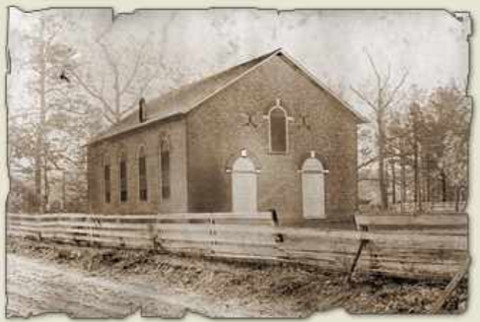Sara Cotton (1638-1639)
Walter Cotton (1639-1640)
Verlinda Cotton (1640-1683)
Mother: Joane
| Wife: Ann Graves | |
|
3 Children: Sara Cotton (1638-1639) Walter Cotton (1639-1640) Verlinda Cotton (1640-1683) | |
|
Father: Jeffry Cotton Mother: Joane |
William Cotton's early life and the circumstances of his appearance in the New World are not well known. He was apparently born 18 Nov 1609 in Bunbury, Cheshire, England. William Cotton's will named Joane Cotton as his mother, and his former home was Bunbury, Cheshire, England. The Bunbury parish register lists a William Cotton as being baptized 18 March 1609/10 (i.e. 1610), son of Jeffry (or Jeffray or Geffray) Cotton. Other children of Jeffry and Joane were Peter (b. 1607), John (b. 1613), Elizabeth (b. 1615, died in infancy), Elizabeth (b. 1616/17), and Richard (b. 1622).
Many list his father as Andrew Cotton, although there is little substantiation behind this name. Jeffry and Joane Cotton were recorded as "poor" people at their burials, which argues against Andrew Cotton being William's father. Moreover, William would later name his new estate in Virginia "Bunbury" after his birth place.
With parents considered "poor," and having five siblings, it is difficult to know how William Cotton received his education for the ministry. It is also possible he had a sponsor who saw promise in him and sent him to further his education at one of the universities. There is a record from Cambridge University of a William Cotton, who matriculated "sizar" from St. John's College in 1627 when he would have been eighteen. The rank of "sizar" was the lowest of three ranks. A "sizar" performed many menial services at this time, probably not something done by the students of wealthier families.
If the 1627 graduation date is correct, William Cotton immigrated to America no earlier than 1627 and no later than 1632 when he was the minister when the monthly court was formed. It is quite possible that William Cotton landed in New England or James City and was called to become the second minister of the church formed within the palisades of a fort located in the vicinity of King's and Cherrystone Creeks. This was a period of unrest in England which made it difficult to find proper Anglican rectors for churches in America. Many of the local ministers came from the ranks of the Puritan dissenters. Cotton was associated with the Puritans and reports were that he had the "character of a stern Puritan." Nevertheless, he may have found the opportunity to take the place of an Anglican minister with an established work most welcome.
 |
William Cotton's life took a substantial turn in 1637. On 10 Jul 1637 he married the daughter of one of the most prominent families of the region. Ann Graves was the daughter of Captain Thomas Graves, one of the original settlers of the area and a noted colonial leader. William obtained the head rights to 350 acres of land, recorded 10 July 1637. The new home of Rev. William Cotton and his wife was located north of the King's and Cherrystone Creeks area in the region of Hungar's Creek, near to that of William Stone, another influential settler, who later became the governor. Stone had married Verlinda Graves, Ann's sister, making another connection in the family.
Reverend William Cotton named his new plantation Bunbury after his home in England. As more people moved to the area around Hungar's Creek, Reverend Cotton was asked to be a regular part of services there. He did agree to preach there once a month in 1639. His father-in-law Thomas Graves had been commissioned to build that church, which is still holding services today. The plantation apparently did well enough to be a financial support to William and Ann, since after the land patents there were no other suits filed for delinquent tithes or other demands for provision.
William Cotton died on 29 Dec 1640. He had written his will (link included on this page) on 20 Aug 1640, being "weak in body" (not expecting to recover). The will implies that he had two children who had died in infancy because he requested to be buried next to them. He also referred to his "yet unborn" son or daughter. It is altogether possible that he died before that daughter, Verlinda, was born. At the very least, he died while she was an infant, since by 1642, his wife Ann had remarried.
Much of the foregoing was taken from the NABB Research Center. See NABB report for that full report including notes.